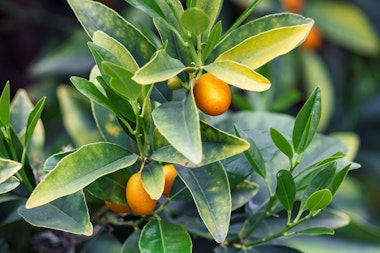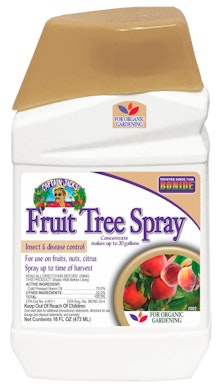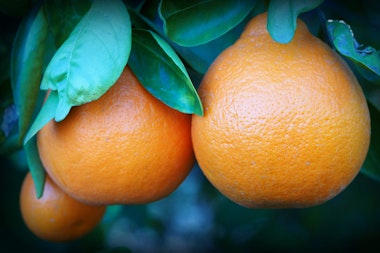Citrus Tree Care
 Citrus Trees
Citrus Trees
What could be better than having your own citrus trees right in your own backyard? Fresh lemons, limes or oranges whenever you want them. Citrus trees are surprisingly versatile plants. With proper citrus tree care, your citrus tree will grow in your yard, in a container on your patio or even indoors—depending on the type of the tree you choose (standard or semi-dwarf). At SummerWinds Nursery, we can teach you everything you need to know about citrus tree care, citrus tree fertilizer, and how to make your trees thrive.

Citrus Plant Facts:
Type: Perennials
Sun-Shade: Full Sun (8 – 12 hours a day)
Soil Condition: Light, well-draining soil mix
Water: Water to keep soil moist, about once a week
Pot Size: 10”-16” pot for 2-3 yr. old tree
Caring For Your Citrus Tree:
 Watering – Citrus trees do well with heavy watering. Avoid watering your tree for just a few minutes every day and instead give them a heavy watering every one to two weeks in the warm summer months and every three to four weeks during the cooler winters.
Watering – Citrus trees do well with heavy watering. Avoid watering your tree for just a few minutes every day and instead give them a heavy watering every one to two weeks in the warm summer months and every three to four weeks during the cooler winters. - Soil – When planting your citrus tree combine E.B. Stone Organics Citrus & Palm Potting or Planting Mix with the existing ground soil.
- Fertilizing – We recommend fertilizing your citrus trees three times per year. Learn more about when and how to fertilize your citrus trees, and the products we recommend using to produce the healthiest and most delicious fruits!
 Insects – We recommend Captain Jack’s Fruit Tree Spray Concentrate, a versatile solution offering comprehensive insect and disease control for your home, garden, and orchard. Acting as a biological fungicide, insecticide, miticide, and nematicide, this product ensures total protection against common garden problems. Approved for organic gardening, Captain Jack’s Fruit Tree Spray can be used up to the day of harvest, utilizing cold-pressed neem oil to effectively manage listed mites, insects, and nematodes. For seasonal application only. Please refer to the directions on the label for temperature recommendations and restrictions.
Insects – We recommend Captain Jack’s Fruit Tree Spray Concentrate, a versatile solution offering comprehensive insect and disease control for your home, garden, and orchard. Acting as a biological fungicide, insecticide, miticide, and nematicide, this product ensures total protection against common garden problems. Approved for organic gardening, Captain Jack’s Fruit Tree Spray can be used up to the day of harvest, utilizing cold-pressed neem oil to effectively manage listed mites, insects, and nematodes. For seasonal application only. Please refer to the directions on the label for temperature recommendations and restrictions.
Beneficial insects such as lady beetles, lacewings and praying mantis are frequently found around citrus trees and will not cause any harm.- Suckering – It is important to remove the tree suckers as soon as possible. These new growths take energy away from the healthy branches on the top of the tree. To remove a sucker, find the graft on your citrus tree. This is usually 4 to 12 inches above the soil line and looks like a horizontal or vertical ‘V’. You will also notice an obvious change in the bark of the tree. Remove any growth below the graft.
- Pruning – Pruning can be done anytime of the year, except during the winter months. During the first year, it is best to pinch off blooms to allow the tree to mature before producing fruit. You can also pinch back tips of new growth to encourage branching. You can prune your citrus tree to any desired shape and height.
 Thorns – Thorns are not generally found on mature citrus trees. Prune any thorns from juvenile trees if you would like.
Thorns – Thorns are not generally found on mature citrus trees. Prune any thorns from juvenile trees if you would like. - Sunburn & More – To help protect your young citrus trees, you can use special paint products designed to protect against sunburn, winter sunscald, insects, and diseases.
Click the buttons below to learn more about citrus:
Citrus Varieties Citrus Feeding Time Semi-Dwarf Citrus Trees
